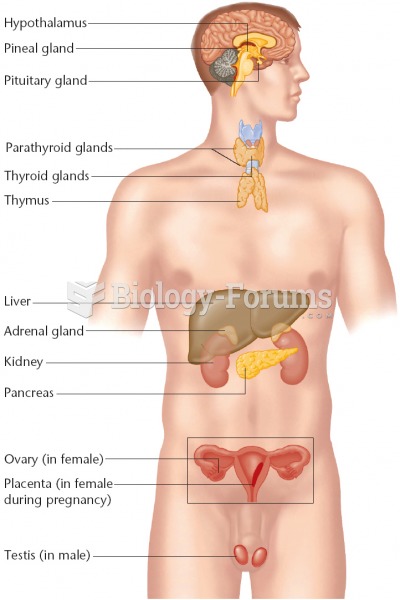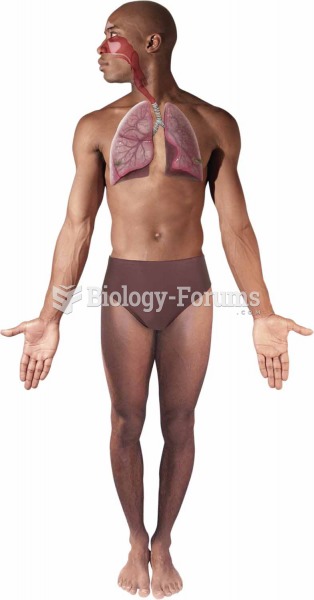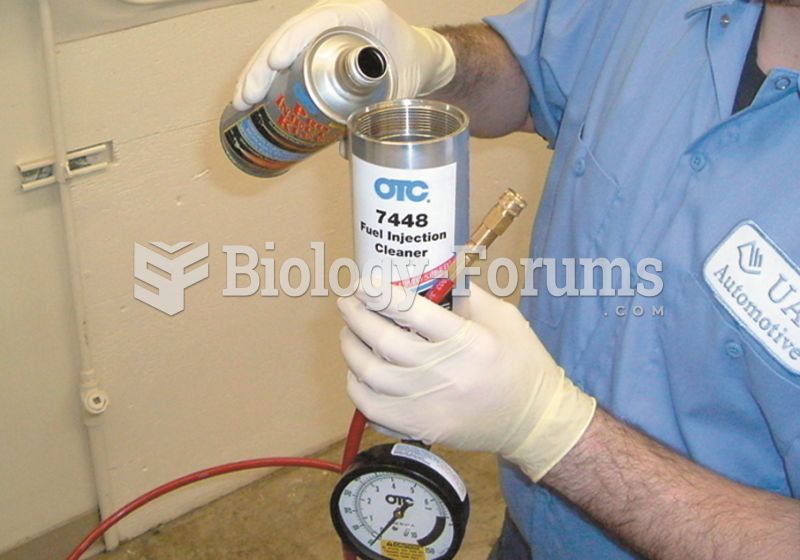This topic contains a solution. Click here to go to the answer
|
|
|
Did you know?
Symptoms of kidney problems include a loss of appetite, back pain (which may be sudden and intense), chills, abdominal pain, fluid retention, nausea, the urge to urinate, vomiting, and fever.
Did you know?
By definition, when a medication is administered intravenously, its bioavailability is 100%.
Did you know?
Oliver Wendell Holmes is credited with introducing the words "anesthesia" and "anesthetic" into the English language in 1846.
Did you know?
It is difficult to obtain enough calcium without consuming milk or other dairy foods.
Did you know?
The longest a person has survived after a heart transplant is 24 years.







